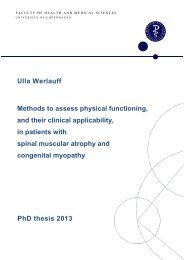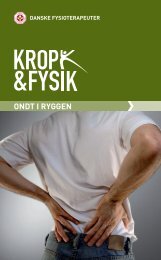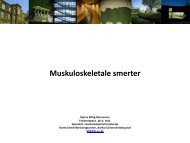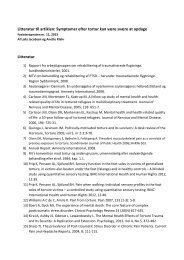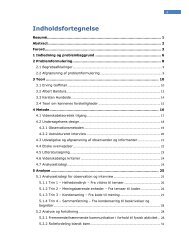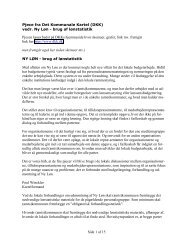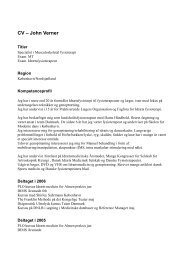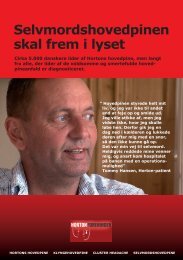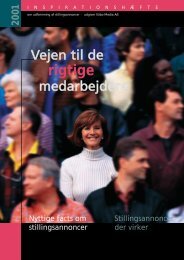Kristian Thorborg's Phd Thesis
Kristian Thorborg's Phd Thesis
Kristian Thorborg's Phd Thesis
Create successful ePaper yourself
Turn your PDF publications into a flip-book with our unique Google optimized e-Paper software.
found to be promising tools for patients with hip and/or groin disability, however the HOOS<br />
questionnaire had only been validated in patients with hip osteoarthritis or following total hip<br />
replacement, and the HOS in patients following hip arthroscopy. Therefore the items were not<br />
necessarily addressing our target group of young to middle-aged physically active patients with hip<br />
and/or groin pain.[115]<br />
The HOOS was chosen as a template for the development of a new PRO questionnaire, because<br />
HOOS consists of items and subscales related to body functions and structure, activities and<br />
participation according to the ICF. It shows excellent measurement qualities in patients with hip<br />
disability for all dimensions. HOOS consists of five subscales: Pain, Symptoms, Function in daily<br />
living (ADL), Sport and Recreation function (Sport/Rec), and hip-related Quality of Life (QOL).[116]<br />
Furthermore, HOOS includes a format that is user-friendly, self-explanatory, and is already<br />
adopted in hip rehabilitation research worldwide.[115] We therefore decided to translate and<br />
cross-culturally adapt the HOOS from the original Swedish version into a Danish version according<br />
to existing guidelines [117,118] in a process that included 24 patients with hip disability<br />
(http://www.koos.nu/). We then incorporated and adapted relevant items from the HOS (Sports<br />
subscale), because this subscale contains some items that were not present in HOOS but might<br />
have been relevant.[119-121]. The items from the HOS were named SP7, SP9, and SP10 (Table 6,<br />
Appendix D).<br />
Groin problems are common in physically active people and HOOS and HOS address dimensions,<br />
such as sport, that are relevant to young to middle-aged physically active people.[115] However,<br />
HOOS and HOS do not include groin-related questions, only questions related to the hip. This is<br />
problematic since young to middle-aged physically active patients often report groin<br />
symptoms[31,32,34] and often do not describe their symptoms as being located in the hip.[115]<br />
All questions in the new outcome questionnaire were therefore rephrased so they referred to the<br />
term “hip and/or groin”, instead of the term “hip” alone, to improve the face validity of the<br />
questionnaire. We found this appropriate based on existing data which have shown that patients<br />
with hip and groin pathology, often report symptoms that do not seem to be restricted to one of<br />
these anatomical regions,[31,32,34] recognising that these regions have never been precisely<br />
defined anatomically, and therefore merely reflect individual and cultural beliefs.[30] By using the<br />
33



